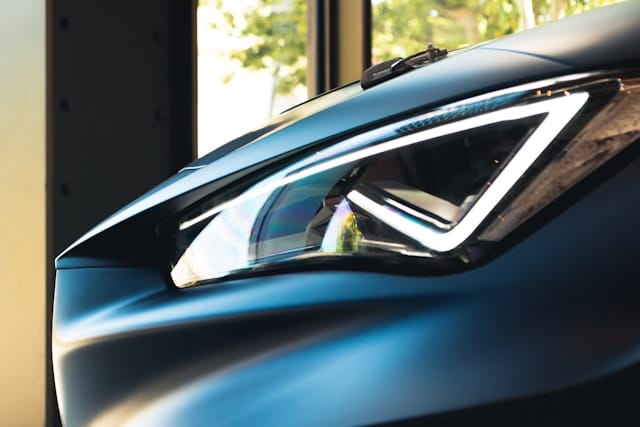How to Ensure Your Vehicle’s Lights Are Properly Aligned After Repairs
 After any significant repairs to your vehicle, especially if the work involved the front end or the areas surrounding the lights, ensuring that the headlights are correctly aligned is crucial for safe driving.
After any significant repairs to your vehicle, especially if the work involved the front end or the areas surrounding the lights, ensuring that the headlights are correctly aligned is crucial for safe driving.
Misaligned headlights can lead to reduced visibility, which increases the risk of accidents, particularly at night or in adverse weather conditions. This article outlines steps you can take to verify that your vehicle’s lights are properly aligned after any repair work, ensuring your safety and that of other road users.
Importance of Proper Headlight Alignment
Safety First
Properly aligned headlights provide optimal lighting to help you see the road and its hazards. They also ensure that other drivers are not blinded by your vehicle’s lights, which can be just as dangerous as poor lighting.
Legal Compliance
In many regions, there are legal requirements regarding the direction and angle of car headlights. Ensuring that your headlights meet these standards not only keeps you within the law but also prevents fines or failed vehicle inspections.
Checking Alignment at Home
Initial Check
You can perform a basic alignment check at home using a flat surface and a vertical wall. Park your vehicle close to a wall, preferably at night, and mark the center top of each headlight beam with a piece of tape. Back up the car straight about 25 feet. The beams should hit the same height or just slightly below the marks on the wall.
Adjustment Necessities
If the headlights seem misaligned, refer to your vehicle’s owner’s manual on how to adjust them, or search for tutorials specific to your car model. Many vehicles have screws or bolts on the headlight assembly for manual adjustments. Using a Phillips screwdriver or a socket wrench, you can adjust these screws to move the headlight beams up, down, left, or right until they are in the correct position.
Professional Alignment
When to Seek Professional Help
If you’re unsure about adjusting the headlights yourself or if the home check indicates a significant misalignment, it’s wise to seek professional help. This is particularly important if the vehicle was involved in a collision that might have affected the mounting points or the frame near the headlights.
Choosing the Right Service Provider
Select a repair shop that specializes in post-collision repairs and specifically mentions headlight alignment as part of their services. Experienced technicians will have the right tools and expertise to ensure precise alignment.
Regular Maintenance and Checks
Routine Inspections
Make headlight checks and alignment part of your regular vehicle maintenance routine. Over time, vibrations and impact from driving can shift your headlights out of alignment.
Immediate Attention to Changes
If you notice any sudden changes in your headlights’ effectiveness or if they seem to illuminate the road differently, check their alignment as soon as possible. Changes can occur after driving on rough roads, experiencing minor bumps, or replacing the bulbs.
Conclusion
Ensuring your vehicle’s headlights are properly aligned after repairs is vital for your safety and for others on the road. Whether you choose to check and adjust the headlights yourself or opt for professional alignment, regular checks will help maintain optimal visibility. Remember, well-aligned headlights are not just a requirement for efficient driving; they are a critical safety feature that should always be in top condition.
